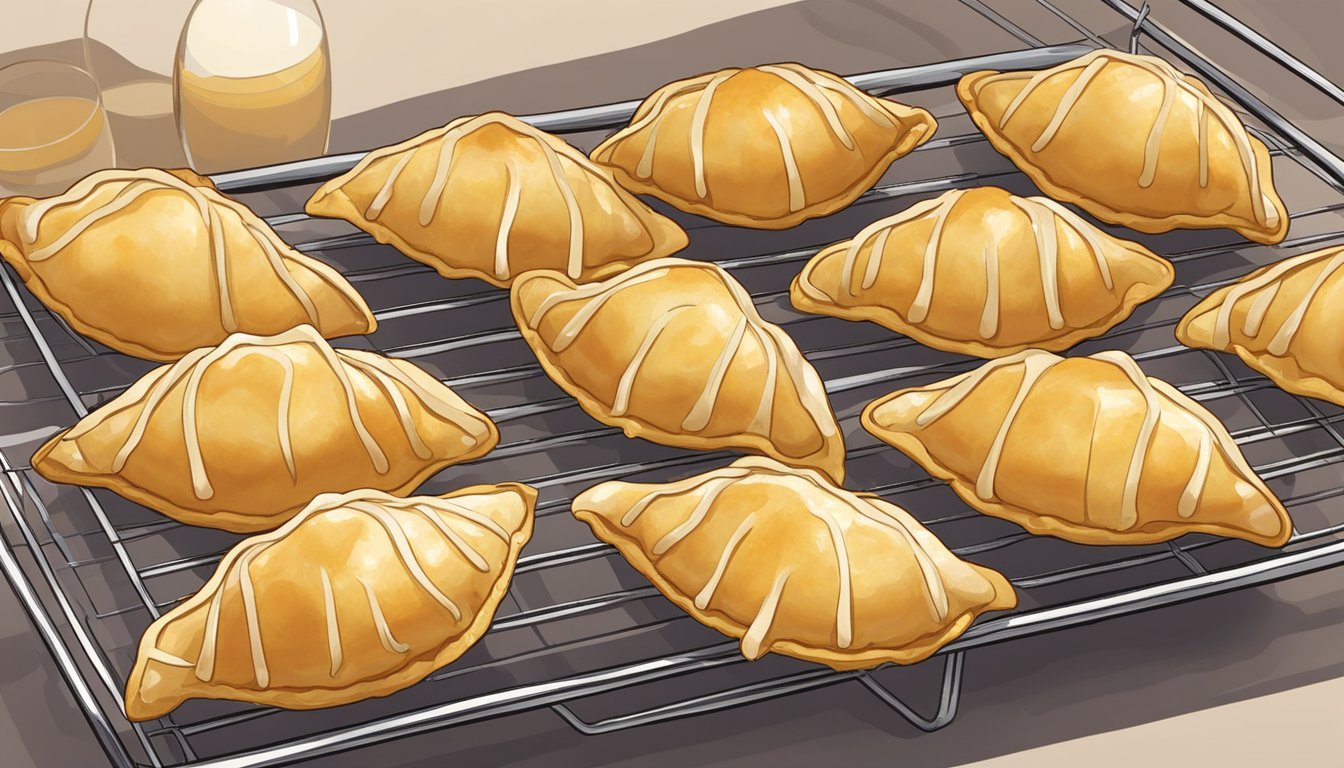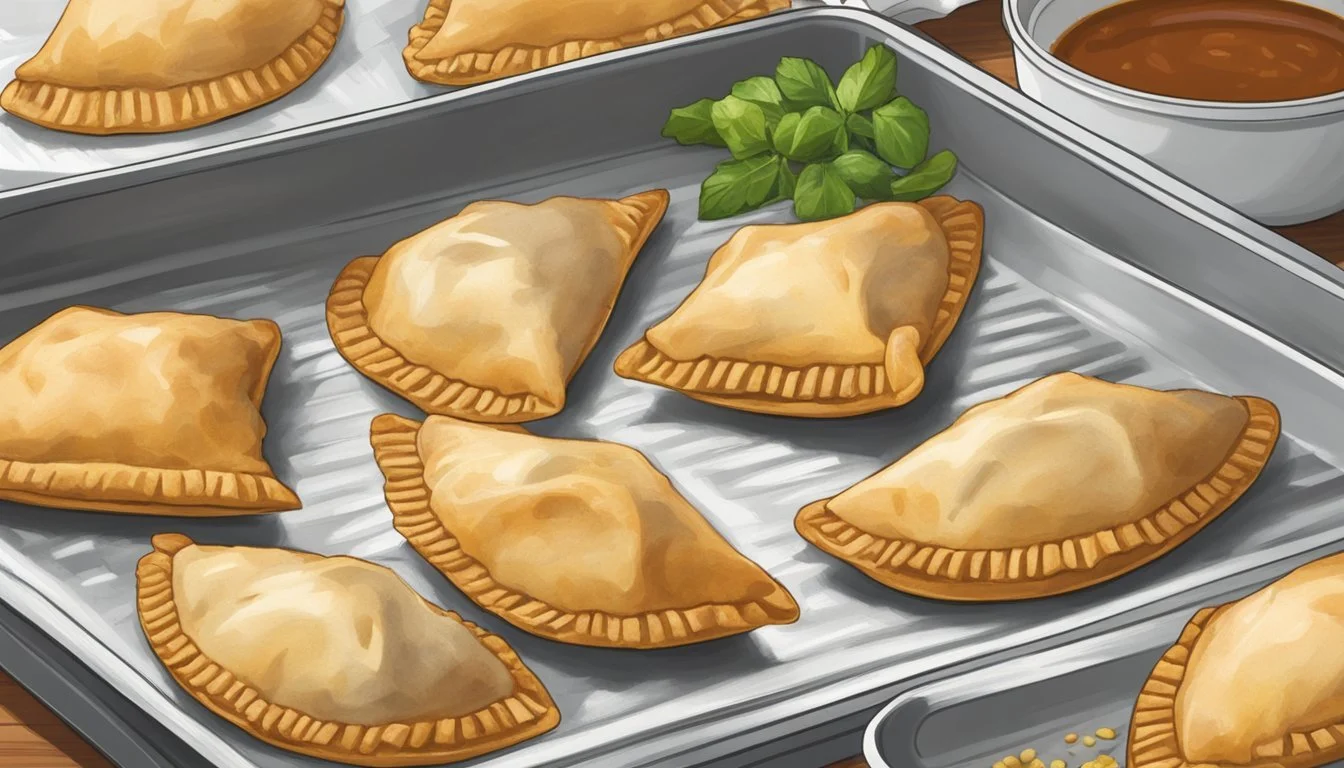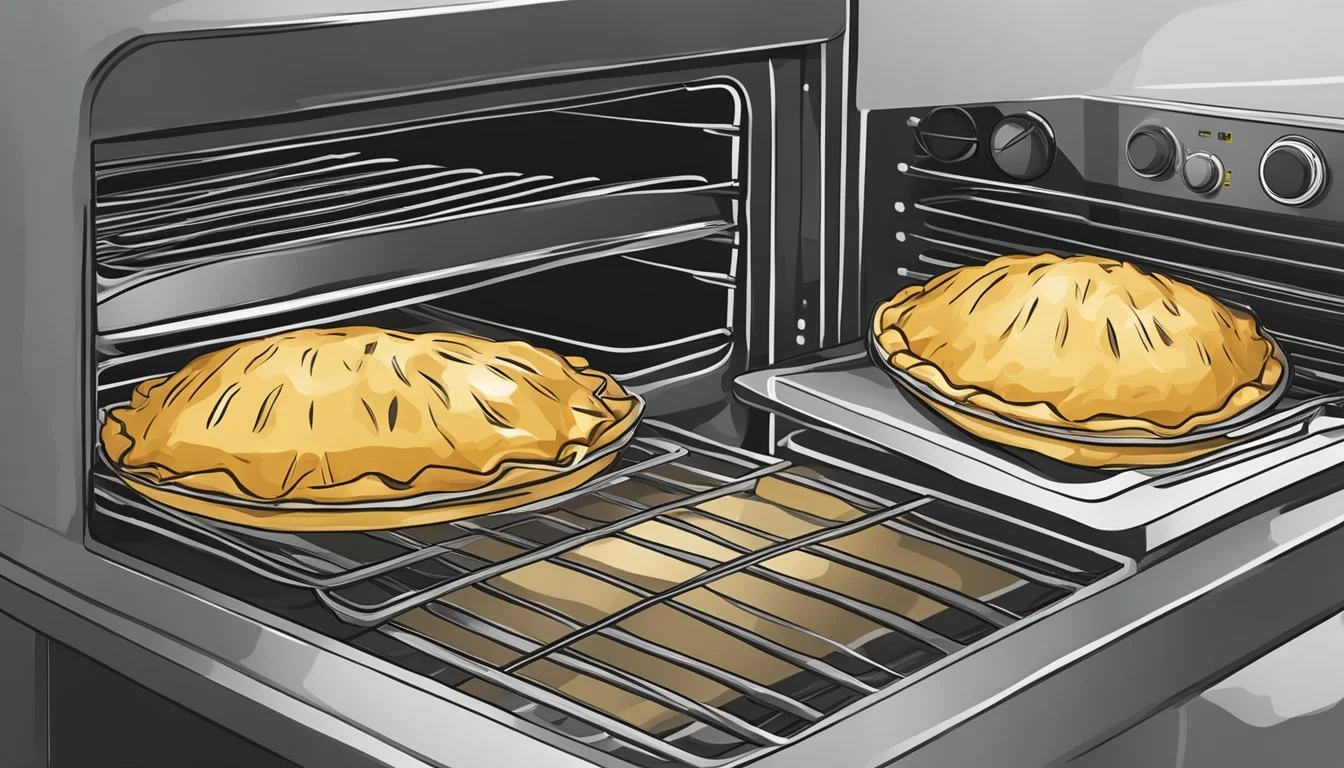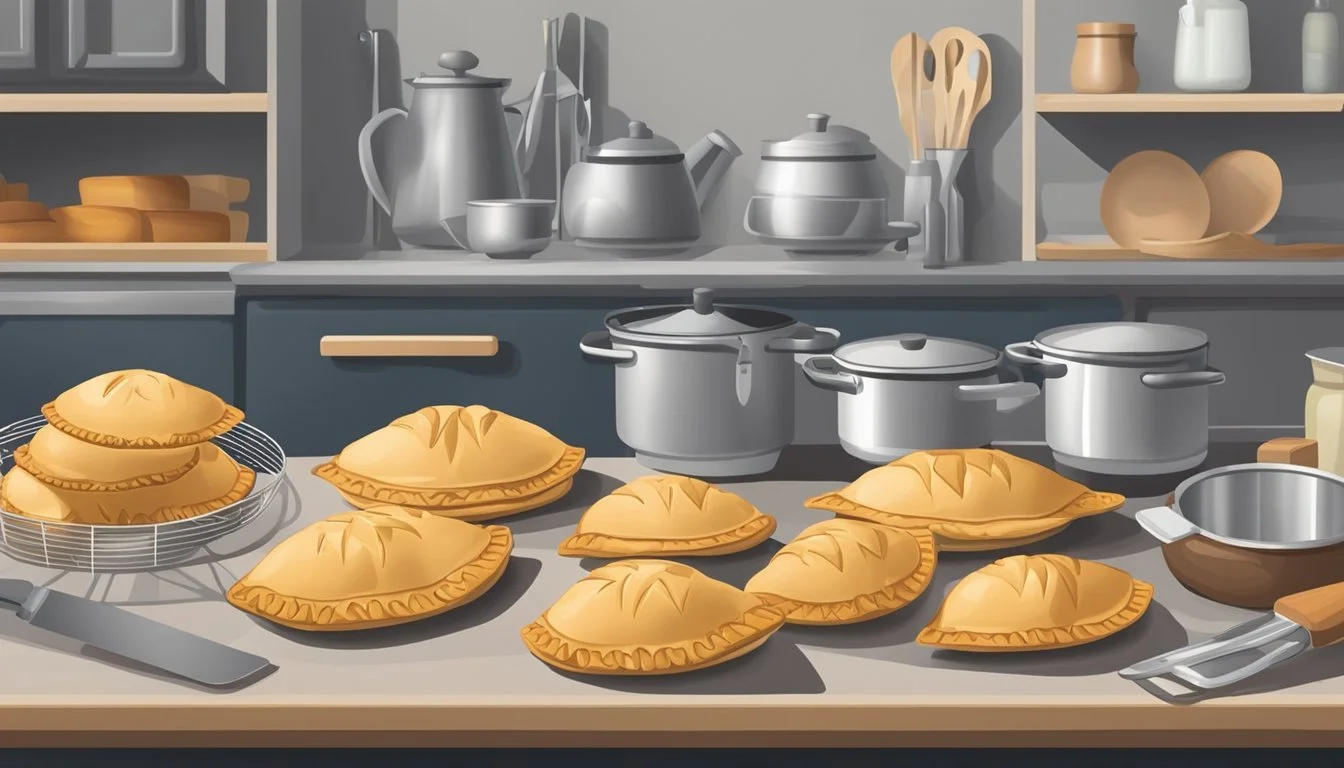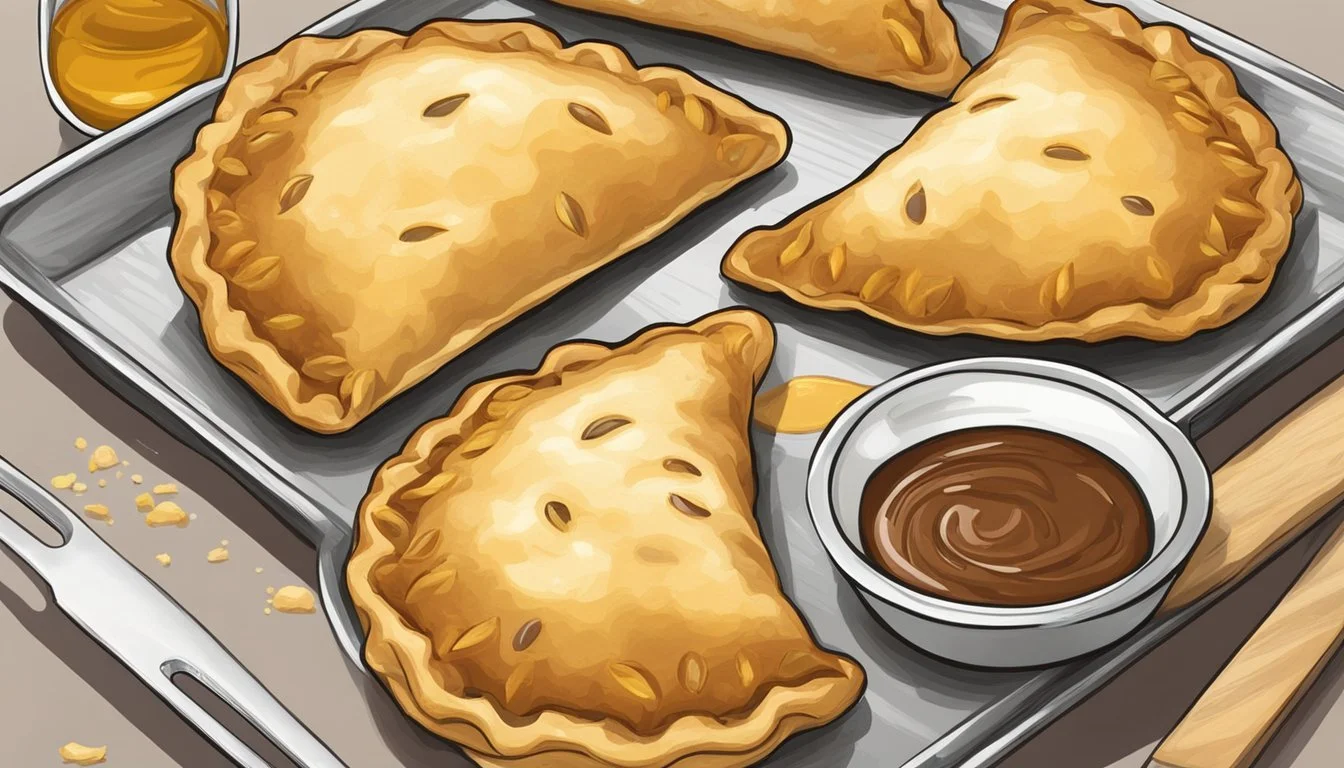Best Way to Reheat Beef Empanadas
Ensuring Flaky Perfection Every Time
Empanadas are a beloved culinary delight, known for their flaky pastry and savory beef filling (What wine goes well with beef?) . When enjoying these treats the next day, the challenge often lies in reheating beef empanadas in a way that preserves their signature flakiness without compromising their taste and texture. The key is to apply gentle heat that warms the filling and revives the pastry to just the right crispness.
Picking the correct reheating method plays a crucial role in achieving the desired result. An air fryer can efficiently recreate the crisp outer shell of the empanada while warming the beef filling thoroughly. Alternatively, a conventional oven can evenly reheat the pastries without introducing additional moisture which might make them soggy. The goal is to retain the empanada's original taste and texture, mirroring the freshness as if they were just made.
While convenience might lead some to use a microwave, this quick method can alter the flaky texture of the empanada crust, turning it chewy. To maintain the ideal eating experience, it is recommended to choose a reheating method that closely replicates the dry heat of the original cooking method. This ensures that beef empanadas are reheated to perfection, with their flakiness intact and ready to be enjoyed again.
Understanding Empanada Reheating Basics
When reheating beef empanadas, maintaining their hallmark texture— a flaky crust with a moist filling—is paramount. Achieving a properly heated empanada without compromising its quality involves understanding the dough's characteristics, reheating factors, and food safety.
Empanada Dough and Texture
The empanada's dough is the framework that holds its savory filling. Comprising flour, fat, water, and sometimes eggs, the dough should heat to achieve a crisp, flaky texture, as opposed to becoming soggy. Upon reheating, the aim is to restore the crust's original crispiness while ensuring the dough has evenly warmed through, preventing a tough or chewy experience.
Factors Affecting Reheat Quality
A series of factors influences the final quality of a reheated empanada:
Moisture: Excess moisture can cause the dough to become soggy. To avoid this, one might consider options like preheating the baking surface or using a wire rack to ensure even air circulation around the empanada.
Heating method: The best reheating methods typically include an oven, toaster oven, or air fryer. These methods help in retaining the crust's crispiness while evenly heating the interior.
Reheating temperature: Gentle reheating at a moderate temperature is recommended. Temperatures around 350°F are generally ideal for warming without burning the crust.
Food Safety and Internal Temperature
Ensuring food safety is critical when reheating any meat product, like beef empanadas. An internal temperature of 165°F is required to consider the empanada safe for consumption. Using a meat thermometer to check the internal temperature of the empanada before consumption is advised. It's not only a food safety measure but also a quality check to ensure the filling is sufficiently warmed through without degrading the texture of the dough.
Preparing Empanadas for Reheating
Proper preparation is essential to ensure beef empanadas reheat evenly and maintain their flakiness. One should consider the state of the empanadas—whether they're frozen or at room temperature—and store them correctly prior to reheating.
Thawing Frozen Empanadas
Frozen empanadas must be thawed gradually to prevent the dough from becoming soggy. It's recommended to transfer frozen empanadas from the freezer to the refrigerator at least several hours before reheating or ideally overnight. This slow thawing process helps maintain the integrity of the pastry.
Using Airtight Containers for Storage
For optimal storage, empanadas should be placed in an airtight container to protect them from moisture and odors. If freezing, ensure to separate layers of empanadas with parchment paper to prevent sticking. When refrigerated in a container, they can maintain quality for up to three days before reheating.
Reheating Methods Compared
To maintain the delectable flakiness of beef empanadas, choosing the right reheating method is crucial. Each technique has its own strengths, from enhancing crispiness to achieving a quick heat-up.
Oven Method for Enhanced Crispiness
The oven is ideal for achieving a crispy exterior while heating the empanadas thoroughly. Preheat the oven to 350°F (180°C) and place empanadas on a baking sheet for 10-15 minutes. This method circulates hot air around the empanadas, ensuring an even cook and restoring their original texture.
Microwave Technique for Quick Heat
The microwave provides the fastest way to reheat empanadas, though it may sacrifice some crispiness. Place them on a microwave-safe plate and heat at medium power for 30-60 seconds. It's a fair choice for those who prioritize convenience over texture.
Skillet Approach for a Crispy Exterior
Reheating in a skillet over medium heat can revive the flakiness of the empanada's shell. No water is needed—just place the empanadas in the pan and heat for a few minutes on each side until they are evenly warmed and the surface is sufficiently crispy.
Air Fryer Use for Even Cook
An air fryer provides a quick alternative to oven reheating with similar results for crispiness. Heat the empanadas at 350°F (180°C) for 4-6 minutes if pre-cooked or 7-10 minutes if starting from a chilled state. The circulating air promotes a uniform temperature throughout.
Additional Methods: Stovetop and Beyond
For those without specialty appliances, the stovetop offers another method. Heat a pan over medium heat and reheat the empanadas until hot, which can take a few minutes per side. Alternatively, steaming empanadas can also reheat them while maintaining moisture, albeit without the crisp exterior.
Tips to Avoid Common Reheating Pitfalls
Reheating beef empanadas can be tricky, as one aims to maintain their flakiness while avoiding sogginess or overcooking. Heed these focused guidelines to ensure your empanadas emerge from the reheating process as enjoyable as when they were first served.
Preventing Sogginess and Moisture Retention
To combat sogginess and ensure a crispy exterior, one should avoid steaming their beef empanadas during the reheating process. Here's how:
Use of Paper Towels: Place a paper towel on the plate under the empanadas before microwaving to absorb excess moisture.
Avoiding Foil in Microwaves: Never use aluminum foil in microwaves as it can cause sparks. Instead, if using an oven, tenting with foil can help contain some of the crispness.
Avoiding Overheating and Overcooking
Maintaining the perfect balance of warmth without cooking the empanadas further is essential:
Oven Temperature: Preheat the oven to 350°F, as higher temperatures may risk overcooking.
Timing: Reheat for 10-15 minutes. Keep a vigilant eye to prevent the pastry from burning or becoming too crisp.
Tips for Reheating in Small Batches
When only a few empanadas need warming up, one should adjust their approach to avoid uneven heat distribution:
Single Layer Reheating: Arrange empanadas in a single layer on the baking sheet or air fryer basket, ensuring they are not touching for even heat circulation.
Air Fryer Technique: If using an air fryer, heat at 340°F for 8-10 minutes. This method works well for small batches, providing a crisp exterior without sogginess.
Optimizing Tools and Accessories
When reheating beef empanadas, selecting the right tools and accessories can make a significant difference in preserving their flakiness. It is essential to consider materials and methods that distribute heat evenly without causing sogginess or drying out the pastry.
Utilizing Baking Sheets and Parchment Paper
Baking sheets provide an even surface for heating empanadas, allowing for consistent heat distribution. Lining the baking sheet with parchment paper further ensures that the empanadas do not stick to the surface and that heat circulates effectively around the pastry. Users should:
Place empanadas on a baking sheet in a single layer.
Ensure the parchment paper covers the sheet entirely.
Benefits of Using a Wire Rack
A wire rack can enhance the reheating process by promoting airflow around the empanadas, which is crucial for maintaining their flakiness. By elevating the empanadas off the baking sheet, they are less likely to become soggy from steam. Here's what to do:
Position the wire rack atop the baking sheet before heating.
Arrange the empanadas on the rack, spaced apart to allow air to circulate.
Selecting the Appropriate Reheating Tool
The choice of reheating tool can impact the quality of the empanada's crust. A toaster oven is often preferred for its compact and efficient heating, while a microwave, although quick, may not retain the pastry's desired texture. To achieve the best result, users must:
Select a toaster oven for even reheating and browning.
If using a microwave, place empanadas on a microwave-safe plate and cover them loosely to trap some moisture without making them soggy.
Pairing and Serving Reheated Beef Empanadas
The right pairings can elevate the simple pleasure of enjoying a beef empanada. Selection of complementary dipping sauces and side dishes enhances both the flavors and the dining experience.
Choosing the Right Dipping Sauces
The rich taste of a beef empanada, often filled with savory ground beef, can be further accentuated with the right dipping sauce. A bold chimichurri sauce, with its herby and tangy flavor profile, cuts through the richness of the meat. For those who prefer something creamy, a cheesy queso dip can provide a delightful contrast to the flaky pastry. Others might enjoy a classic salsa — either a vibrant, fresh pico de gallo or a smoky salsa roja. These sauces add a burst of flavor without overpowering the empanada's own seasoned filling.
Side Dishes to Serve with Empanadas
Empanadas are often hearty on their own, but pairing them with the right side dish can create a more balanced meal. Here are a couple of side dish ideas:
Cilantro Lime Rice: A light and citrusy rice dish can cleanse the palate between bites of empanada.
Sweet Plantains: Their caramelized sweetness complements the savory depth of the beef empanadas.
These sides should be carefully chosen to complement, rather than compete with, the flaky, tender bread encasing the seasoned ground beef. Whether one opts for simplicity with bread or a more elaborate recipe, the key is to let the empanadas shine as the star of the meal.
Conclusion
When reheating beef empanadas, the goal is to restore the freshly-baked taste and flakiness of the pastry. It's essential to consider the method that works best for the tools available and the desired outcome.
Microwave: For speed, the microwave can work, but it's vital to wrap empanadas in a damp paper towel to provide moisture and avoid sogginess. However, microwaves can unevenly heat and may not achieve the desired flakiness.
Oven or Toaster Oven: Preheating to 350°F (175°C) and reheating empanadas on a baking sheet for about 10-15 minutes is preferred for an even, thorough heat that revives the crust's crispness. To maintain dampness, cover with foil and then remove it for the last few minutes of heating.
Air Fryer: A preheated air fryer at 350°F efficiently heats empanadas, typically taking 7-10 minutes. This method ensures a crispy outer layer and a hot center.
For those planning to store and reheat later, empanadas freeze well. To freeze empanadas, one must let them cool completely post-baking, then wrap them individually in plastic wrap and store them in a freezer bag. When ready to eat, they can be reheated directly from frozen, adding a few extra minutes to the cooking time.
Safety Tip: Ensure the internal temperature of the reheated empanada reaches 165°F, and consume leftovers within 3-4 days for best quality and food safety.
In summary, the toaster oven and oven methods stand out for restoring the beef empanadas' flakiness and ensuring a thorough heat. The air fryer is a close second, efficiently heating with similar results. Whichever method one chooses, careful attention to the reheating process will result in revived empanadas that are both safe and delicious to enjoy.


